An immense love for sports makes Australia simply awe-inspiring. After having spent 4 months, 25 000 km away from my Canadian home, it was inevitable that I would arrive at this conclusion. Of course, even before setting foot on Australian soil, I was positively biased towards sport. As a student of Physical and Health Education at home and a student of Human Movement and Health Education in Sydney, I tend to perceive sport as the cure to all human afflictions. Unfortunately, that is not always the case. With the Sport, Learning, and Australian Culture course I learned to view sports with a more sociologically critical perspective. Clearly, I am not saying that sports are detrimental to society. Instead, I believe sports must be used diligently to improve society.
Upon my arrival I was hit with a slightly negative facet of Australian sport. That of nationalism embedded in sport. As a democratic country, similar in many aspects to Canada, I arrived with the assumption that every citizen is entitled to a free opinion, which is not to be denigrated by others. Unfortunately, intolerant fanatical supporters of Cadel Evans (the first Australian to win a Tour de France) demonstrated hatred through threats aimed at a blogger who politely provided her opinion. These events disenchanted me at first, but after integrating myself within the Australian culture, I understood that such negative behaviours are not exhibited by the majority of Australians.
A positive aspect of Australian sport which I quickly noticed was the abundance of active participants. When taking walks to the botanical garden, the beach, and city parks I was able to witness 7 year old rugby players and elderly joggers outperform me! This realisation was certainly a pleasant surprise for me as I knew that sports provide participants with numerous physical, mental, and social health benefits (e.g., lower risk of contracting heart disease, increase in self-esteem, and possibility to communicate more effectively). Along with physical health benefits, I made the observation that an abundance of participants entails an abundance of supporters for professional sports. In theoretical circumstances, this would lead to a spike in costs for tickets. Fortunately, the profusion of football codes in Australia means that the supply of tickets is equally as large (if not more) as the demand for them. Ultimately, the result for me was easy access to cheap tickets to wonderful Rugby League and Aussie rules Football games.
Another positive benefit of sports that I encountered while in Australia was its capability to give certain minority individuals a sense of agency. For example, in a class lecture on Netball, I was able to identify feminine self-determination exhibited through a humorous video. This video depicted women athletes occupying central roles, while being supported by all-male cheerleaders. Throughout the semester, I also came to the sad realisation that sports does not always offer minority groups the help to escape unfortunate circumstances. When examining the history of Australian sports, it was not too long before I came across events in which Aboriginal and Torres Strait Islanders were taken advantaged of. For example, Sharman’s famous boxing tents routinely exploited the vulnerable “black man” in order to reap additional profits.
This semester abroad also afforded me countless amounts of practical knowledge regarding sports. For example, after having been mystified by the exotic rules of Australian Football League, I was taught by a Sydney Swan fan at the ANZ stadium the intricacies of the wonderful sport. Additionally, while accompanied by Australian mates I finally learned how to throw a rugby ball (with spin!). This obviously required my body to perform a range of motions quite different from the overhand Canadian football pass. Furthermore, I was able to discover the rules for a game perfect for the scorching Australian heat, lawn bowling. During this field trip I realised that is not as easy as I thought to roll a disproportionally weighed ball a long distance towards a miniature white “joker” ball. Moreover, during numerous classes involving active participation, I was initiated to team sports such as cricket, netball, and rugby league.
Above all other sports, the physical activity which most attracted my attention and dedication was without a doubt, surfing. This activity and lifestyle has indeed provided me with nourishment for my spiritual, physical, and mental self. Along with harbouring the magnificent sport of surfing, I have also seen how the beach is home to a variety of healthy activities. For example, it is the perfect environment for active family outings, sporty social gatherings, and passive relaxations. Unfortunately, despite the relative peacefulness of the beach setting, certain tragic events have nevertheless unfolded on the sand. For instance, devastating racial riots emerged between Anglo-Saxon and Lebanese groups in 2005 at Cronulla beach. While similar riots and injudicious anger spread to other regions of Australia, Maroubra was safeguarded for possibly two reasons. Firstly, the police barricaded the area and secondly, a media conference held by the Bra Boys surfing gang condemned the riots and therefore calmed tensions between the two groups (http://www.theage.com.au/news/national/when-two-tribes-go-to-war-a-culture-clash/2005/12/13/1134236064343.html?page=2, 2005). As opposed to common stereotypes held against the Bra Boys, such positive community activism describes more accurately their purpose. This I learned while watching the documentary Bra Boys: Blood is Thicker than Water.
At a time during my semester when home felt further than 25 000km away, it was comforting to realise how New Zealand’s scenery and culture is similar to the Canadian landscape. During my week-long trip to Kiwi land, I indeed felt closer to home; even though, according to Google map, I was further away. While visiting Australians’ neighbours, I also had the opportunity to experience what it feels like to support the world’s greatest Rugby Union team, the All-Blacks
As I contemplate on my semester abroad I can only think about how I will miss the rugby, OZ rules, netball, cricket, lawn bowling, and other (no longer) exotic sports. Fortunately, I will bring back the memories, understandings, and knowledge of Australian sport back home
Yours truly,
A thoughtful Physical and Health Educator
Upon my arrival I was hit with a slightly negative facet of Australian sport. That of nationalism embedded in sport. As a democratic country, similar in many aspects to Canada, I arrived with the assumption that every citizen is entitled to a free opinion, which is not to be denigrated by others. Unfortunately, intolerant fanatical supporters of Cadel Evans (the first Australian to win a Tour de France) demonstrated hatred through threats aimed at a blogger who politely provided her opinion. These events disenchanted me at first, but after integrating myself within the Australian culture, I understood that such negative behaviours are not exhibited by the majority of Australians.
A positive aspect of Australian sport which I quickly noticed was the abundance of active participants. When taking walks to the botanical garden, the beach, and city parks I was able to witness 7 year old rugby players and elderly joggers outperform me! This realisation was certainly a pleasant surprise for me as I knew that sports provide participants with numerous physical, mental, and social health benefits (e.g., lower risk of contracting heart disease, increase in self-esteem, and possibility to communicate more effectively). Along with physical health benefits, I made the observation that an abundance of participants entails an abundance of supporters for professional sports. In theoretical circumstances, this would lead to a spike in costs for tickets. Fortunately, the profusion of football codes in Australia means that the supply of tickets is equally as large (if not more) as the demand for them. Ultimately, the result for me was easy access to cheap tickets to wonderful Rugby League and Aussie rules Football games.
Another positive benefit of sports that I encountered while in Australia was its capability to give certain minority individuals a sense of agency. For example, in a class lecture on Netball, I was able to identify feminine self-determination exhibited through a humorous video. This video depicted women athletes occupying central roles, while being supported by all-male cheerleaders. Throughout the semester, I also came to the sad realisation that sports does not always offer minority groups the help to escape unfortunate circumstances. When examining the history of Australian sports, it was not too long before I came across events in which Aboriginal and Torres Strait Islanders were taken advantaged of. For example, Sharman’s famous boxing tents routinely exploited the vulnerable “black man” in order to reap additional profits.
This semester abroad also afforded me countless amounts of practical knowledge regarding sports. For example, after having been mystified by the exotic rules of Australian Football League, I was taught by a Sydney Swan fan at the ANZ stadium the intricacies of the wonderful sport. Additionally, while accompanied by Australian mates I finally learned how to throw a rugby ball (with spin!). This obviously required my body to perform a range of motions quite different from the overhand Canadian football pass. Furthermore, I was able to discover the rules for a game perfect for the scorching Australian heat, lawn bowling. During this field trip I realised that is not as easy as I thought to roll a disproportionally weighed ball a long distance towards a miniature white “joker” ball. Moreover, during numerous classes involving active participation, I was initiated to team sports such as cricket, netball, and rugby league.
Above all other sports, the physical activity which most attracted my attention and dedication was without a doubt, surfing. This activity and lifestyle has indeed provided me with nourishment for my spiritual, physical, and mental self. Along with harbouring the magnificent sport of surfing, I have also seen how the beach is home to a variety of healthy activities. For example, it is the perfect environment for active family outings, sporty social gatherings, and passive relaxations. Unfortunately, despite the relative peacefulness of the beach setting, certain tragic events have nevertheless unfolded on the sand. For instance, devastating racial riots emerged between Anglo-Saxon and Lebanese groups in 2005 at Cronulla beach. While similar riots and injudicious anger spread to other regions of Australia, Maroubra was safeguarded for possibly two reasons. Firstly, the police barricaded the area and secondly, a media conference held by the Bra Boys surfing gang condemned the riots and therefore calmed tensions between the two groups (http://www.theage.com.au/news/national/when-two-tribes-go-to-war-a-culture-clash/2005/12/13/1134236064343.html?page=2, 2005). As opposed to common stereotypes held against the Bra Boys, such positive community activism describes more accurately their purpose. This I learned while watching the documentary Bra Boys: Blood is Thicker than Water.
At a time during my semester when home felt further than 25 000km away, it was comforting to realise how New Zealand’s scenery and culture is similar to the Canadian landscape. During my week-long trip to Kiwi land, I indeed felt closer to home; even though, according to Google map, I was further away. While visiting Australians’ neighbours, I also had the opportunity to experience what it feels like to support the world’s greatest Rugby Union team, the All-Blacks
As I contemplate on my semester abroad I can only think about how I will miss the rugby, OZ rules, netball, cricket, lawn bowling, and other (no longer) exotic sports. Fortunately, I will bring back the memories, understandings, and knowledge of Australian sport back home
Yours truly,
A thoughtful Physical and Health Educator
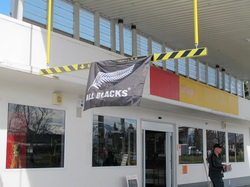

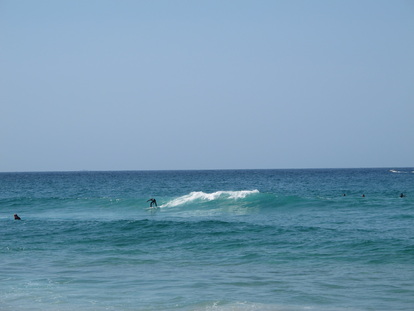
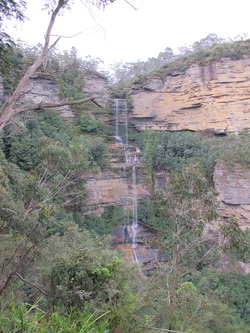
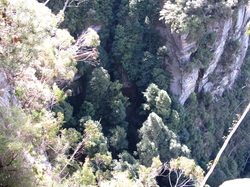
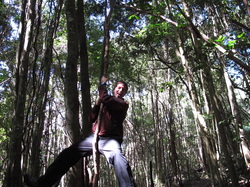
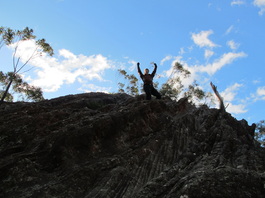
 RSS Feed
RSS Feed